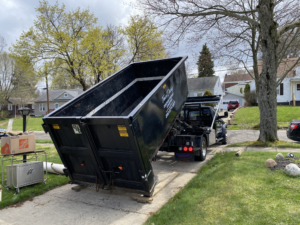A fence is a barrier erected to confine or exclude people or animals, define boundaries, or decorate. Fences can be constructed of wood, stone, soil, or other materials.
The purpose of the fence is a key factor in determining what kind of material to use. Choosing the right wood will help the fence last longer. Cedar is an excellent option for wet climates while pine and cypress are good choices for drier climates. Contact Muskegon Fence Company now!

Fences can play an important role in securing businesses and other areas, but only if they’re properly installed and equipped with security features. These security measures can include lighting, closed-circuit television, manned observation posts, and intrusion detection systems. These features can help deter criminal activity and prevent unauthorized entry, while also helping law enforcement investigate crimes that have already occurred.
A fence is any structure, wall or barrier erected at grade for the purpose of defining boundaries of property, separating open space, restricting ingress to and egress from property, providing security or protection of property or as a visual or acoustic screen. Fences may be made of wood, masonry, boards, wrought iron, wire, chain link, or other material, and they can be used to secure buildings, outdoor equipment, animals, or crops.
Depending on the type of stolen goods, fences will often attempt to disguise or hide their origin or alter serial numbers so they can sell them at higher prices in the legal marketplace. They may even try to transport the goods to a different city or state to reduce the likelihood that they will be recognized by law enforcement officers.
Fencing, in this case, refers to the buying and selling of stolen items. This activity is a significant part of the crime business, and it can involve anything from electronics and jewelry to cars and fine art. In many cases, fences are charged with the same crimes as the thieves they work with, although the exact charges vary based on jurisdiction and value of the stolen goods.
Steel security fences are a popular option for high-security applications, such as around prisons and military bases. These fences are made from heavy-duty materials, such as solid steel or barbed wire, and they can withstand physical attacks. They are also available in a range of designs, including picket, panel, and mesh styles.
A perimeter security fence consists of a monitored pulse fence with energized wires that can detect motion or vibrations and send an alert when someone approaches the boundary. These types of fences are a great deterrent and can be combined with other security measures, such as barbed wire or razor wire. The voltage levels of these types of fences can be adjusted to suit the level of security needed. They can also be enhanced by adding a sensor system, and signage is typically posted to warn people about the electric nature of the fence.
Privacy
A fence is not just for keeping unwanted guests out – it can also provide privacy by shielding your home from the view of passersby. If you live near busy streets, close neighbors or other high-traffic areas, a privacy fence can be an invaluable tool for maintaining personal space and reducing noise pollution. Additionally, for homes in high wind regions, a privacy fence can act as an effective windbreak to protect outdoor spaces like gardens or patios.
A variety of different materials are available to create a privacy fence, allowing homeowners to choose the option that best suits their budgets and aesthetic preferences. Wood fences offer classic beauty and durability, while vinyl and aluminum fences provide a low-maintenance alternative that is resistant to rot and insects. When choosing a material for your privacy fence, consider the level of privacy you desire as well as its durability and maintenance requirements.
Once you’ve selected the type of fence that best meets your needs, it’s important to properly install it. This will ensure that your fence is sturdy, durable and visually appealing. For example, wood privacy fences require proper installation techniques to avoid leaning and sagging over time. These steps include using a post hole digger to dig deep holes for the posts, as well as using a level to ensure that each section of the fence is straight and evenly positioned.
In addition, homeowners should be aware of any local zoning regulations or homeowners’ association rules that may require them to follow specific guidelines for fence height, materials and designs. These rules will help to prevent conflicts with neighbors or a possible citation. Additionally, it’s important to use a contractor with experience installing privacy fences, as this will ensure that the project is completed correctly and in compliance with any community requirements. Finally, it’s critical to inspect the finished product regularly for signs of damage or wear-and-tear. Taking care of these minor details will allow you to enjoy the privacy features of your new fence for years to come.
Durability
A fence provides a crucial role in safeguarding your premises and establishing boundaries, but it’s vulnerable to environmental challenges that can cause wear and tear. The longevity of your fence will be determined by a variety of factors, including the type of materials used and consistent maintenance efforts. Understanding these factors can empower homeowners to make informed decisions that will ensure the durability of their fencing investments.
Every fencing material offers its own unique set of benefits and drawsbacks, so it’s important to select a solution that matches your specific needs and environmental conditions. However, several key features are consistently found in top-performing fencing materials. These include impact resistance, rust and corrosion resistance, rot and insect resistance, and flexibility.
One of the most common issues that can reduce the lifespan of a fence is moisture. Moisture can damage wood structures, including fence posts and panels, which will eventually deteriorate, becoming weak and unstable. To avoid this, choose a pressure-treated wood, like cedar or spruce, and ensure that the posts are not touching the ground and that they have concrete or gravel filler in their post holes to prevent moisture from reaching the wood and shortening its lifespan.
Durability also depends on the strength of your fence structure, which can be affected by factors such as the wire gauge and mesh size. Choosing a lower-gauge wire, such as 9-gauge, will result in a stronger, more resilient structure that can withstand impact and resist bending. A larger mesh size can be useful if you want to keep out wildlife and debris, while a smaller mesh size is ideal for keeping pets and children safe from harm.
When assessing the durability of your fence, it is important to remember that even the most durable materials can fail prematurely if they are not installed correctly. Using a come-along winch or fence straightener can help you gradually pull your fence back into shape, rather than needing to replace it altogether. Regular maintenance can also enhance the durability of your fence, preventing small issues from developing into more severe problems and prolonging its lifespan.
Aesthetics
Whether defining boundaries, creating visual interest, reinforcing brand identity, enhancing security, or incorporating lighting and other features, fencing provides numerous opportunities to elevate aesthetics on commercial properties. With creativity, attention to detail, and expert craftsmanship, fences can become a standout design feature that sets a property apart from the rest.
Decorative gates and other elements can add visual appeal to your artistic fence. Explore various materials, styles, and textures to create a unique aesthetic that complements your home or other landscaping features. For instance, wrought iron fences offer a classic elegance that enhances the look of your outdoor space. Wooden fences, on the other hand, provide a warm, natural aesthetic and can be painted or stained to match your home’s decor.
Corrugated metal fences also add a modern, industrial aesthetic to your outdoor space. This material is incredibly durable and is resistant to rust and other corrosive effects. Additionally, it can withstand high winds without sagging or warping. Regardless of the material you choose, the overall aesthetic of your fence is a direct reflection of the pride you take in your home and landscape.
Incorporating sculptural additions to your fence offers a creative way to express yourself. Work with a local artist to create a unique piece of art that reflects your personality and complements the ambiance of your landscape. Experiment with a wide variety of painting techniques and color palettes to achieve the desired aesthetic. Be sure to use weather-resistant paints and sealants to ensure the durability of your artistic fence.
Another way to infuse your artistic fence with beauty is by using living plants. Species such as ivy or climbing hydrangeas add natural beauty to your fence while providing an eco-friendly alternative to traditional fencing materials.
Incorporate lighting to your artistic fence to transform it into a captivating focal point both day and night. Consider utilizing solar-powered or low-voltage lighting to accentuate architectural details, highlight artwork, and create ambient illumination. Additionally, smart lighting technologies allow you to customize colors and settings to evoke different moods and emotions. Moreover, these systems can be controlled remotely to optimize your outdoor lighting needs.





